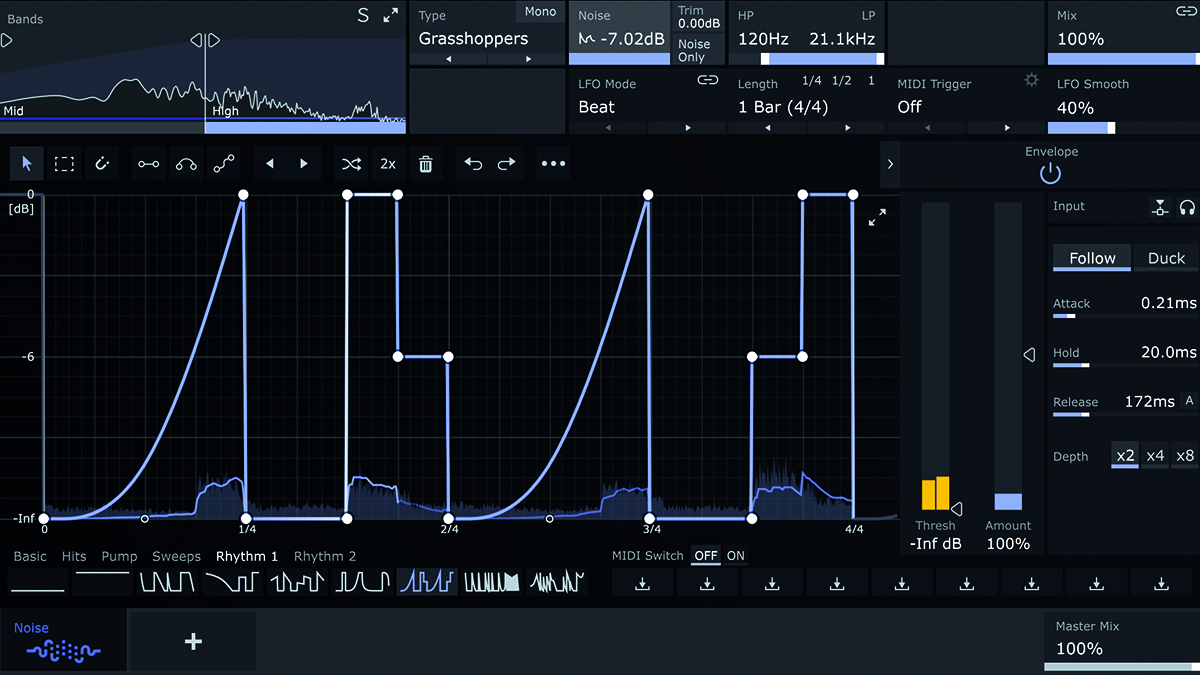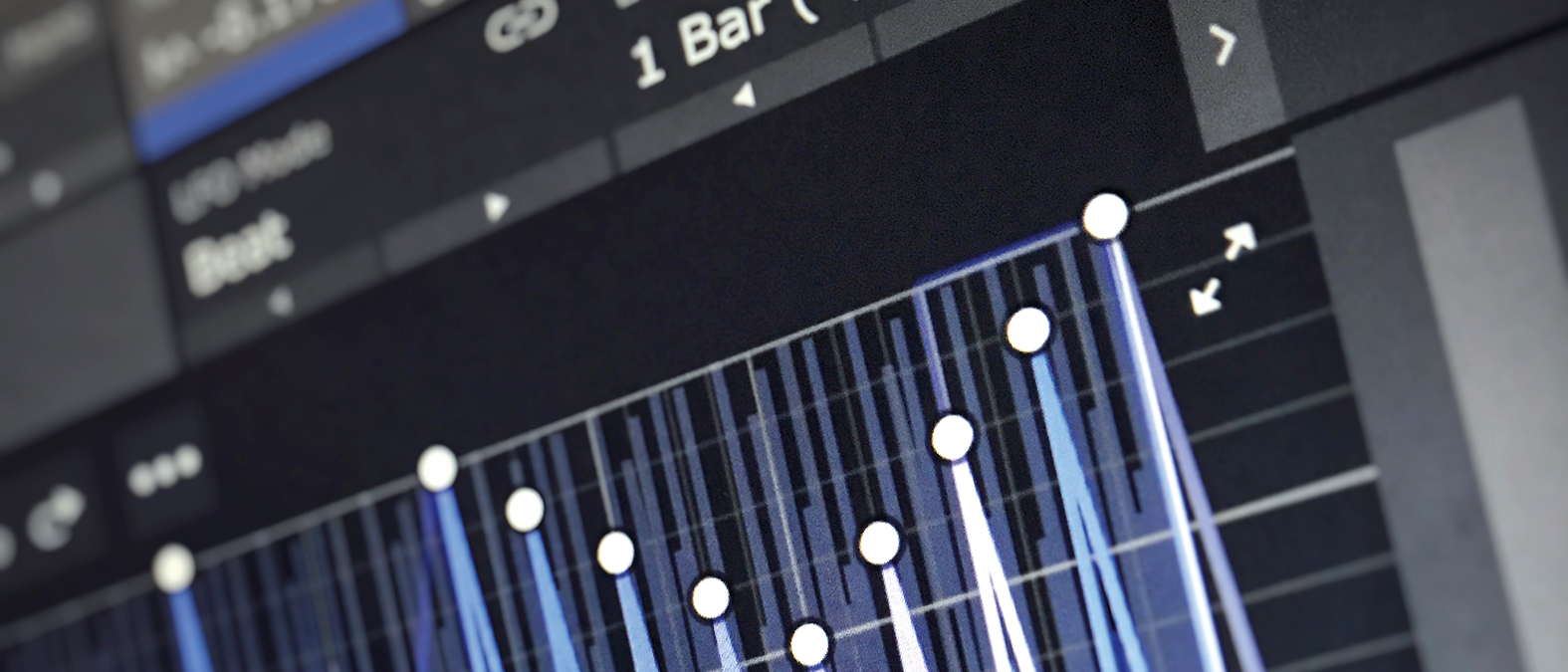MusicRadar Verdict
A fun and powerful addition to ShaperBox that’s great for dramatic FX and subtle rhythmic tricks.
Pros
- +
Fantastic range of source noise samples.
- +
Lots of rhythmic modulation tools.
- +
Complements other Shaper effects well.
Cons
- -
Multi-band setup can be confusing.
MusicRadar's got your back
Cableguys NoiseShaper: What is it?
Cableguys’ ShaperBox 2, the plugin which acts as a host for a library of Shaper effects, now includes the latest addition to the package: NoiseShaper.
NoiseShaper differs slightly from the other effects. Instead of applying an effect to the incoming audio, NoiseShaper creates sound itself.
As you might have guessed, the primary focus here is noise. It comes with a library of noise samples, which can be blended with the incoming audio and modulated in a variety of ways to create dynamic, rhythmic effects.
Cableguys NoiseShaper: Performance and verdict
Much of the familiar ShaperBox workflow remains unchanged. The primary element of the UI remains the titular custom modulation shaper, which allows users to craft a wide variety of loopable envelope shapes or pick premade ones from an array of templates.
As with other Shapers, the incoming signal can be split into three independent frequency bands, each with its own parameter and modulation settings. The plugin also offers an assortment of MIDI triggering and switching tools – great for live jamming and performance.

For each band, NoiseShaper offers a dropdown to pick a source sample from the library. These range from simple white or pink noise loops to more interesting textures, such as broken equipment, field recordings or vinyl crackle samples. The range and quality is great. Users can also use their own loops by dropping them into NoiseShaper’s sample folder, although the range on offer is good enough that it’s hardly worth bothering.
The envelope follower – a feature familiar from other Shapers – takes a front seat here. NoiseShaper works best when the noise samples pump in time with, or around, the incoming audio signal, so it makes sense that the follower is always on by default.
One slightly curious element of NoiseShaper’s design is how it interacts with the multi-band splitter. As with other Shapers, the incoming signal can be split into three bands, but here the noise samples are always applied with their full frequency range. The reasoning here is that it allows users to, for example, have high-frequency tape noise respond to just the low-frequency pulse from a kick, but the design also feels at odds with the multiband nature of ShaperBox. It’s hardly a problem, since there’s an additional high/low filter that can be applied to the noise samples anyway, but it would be nice to have an option to engage/disengage whether each band’s noise is affected by the multi-band filter.
It’s fantastic for creating builds or adding drama
That aside, NoiseShaper is loads of fun and has the potential to be the most creatively powerful tool in ShaperBox’s arsenal. It’s fantastic for creating builds or adding drama. Some of the most fun applications come from layering multiple lines of rhythmically pulsing noise to create complex grooves. A must-try for existing ShaperBox users, and yet another argument why the uninitiated should take it for a spin.
MusicRadar verdict: A fun and powerful addition to ShaperBox that’s great for dramatic FX and subtle rhythmic tricks.
Cableguys NoiseShaper: The web says
"It’s a fantastic sound design and mix tool for adding all-important texture, character and movement to any audio, and we’re excited to explore its many possibilities."
MusicTech
Cableguys NoiseShaper: Hands-on demos
MusicRadar
Cableguys
SweetScale TV
Cableguys NoiseShaper: Specifications
- Multi-band sampled noise generator. Also available as part of ShaperBox 2 bundle priced at €89 or the Cableguys bundle for €169
- CONTACT: Cableguys
- BUY: Cableguys NoiseShaper at Plugin Boutique
I'm the Managing Editor of Music Technology at MusicRadar and former Editor-in-Chief of Future Music, Computer Music and Electronic Musician. I've been messing around with music tech in various forms for over two decades. I've also spent the last 10 years forgetting how to play guitar. Find me in the chillout room at raves complaining that it's past my bedtime.
“An incredible experience that went beyond just teaching music”: The UK’s biggest free music making weekend is extended to four days
“This time it’s all about creativity… Go crazy. Do whatever you wanna do with it”: Budding luthiers, assemble! Harley Benton’s DIY Kit Challenge is now open and there are prizes to be won
"At first the tension was unbelievable. Johnny was really cold, Dee Dee was OK but Joey was a sweetheart": The story of the Ramones' recording of Baby I Love You










